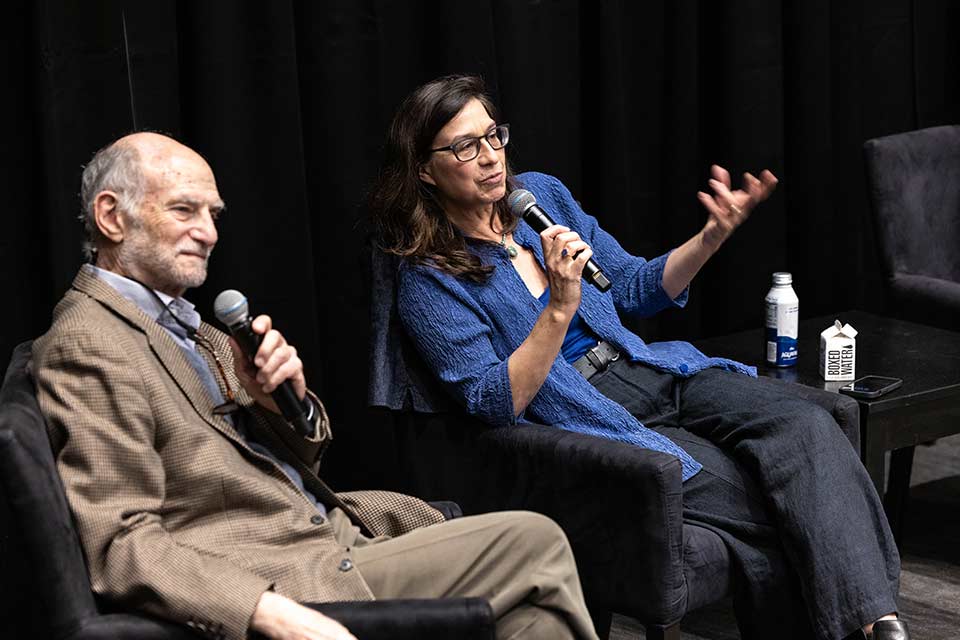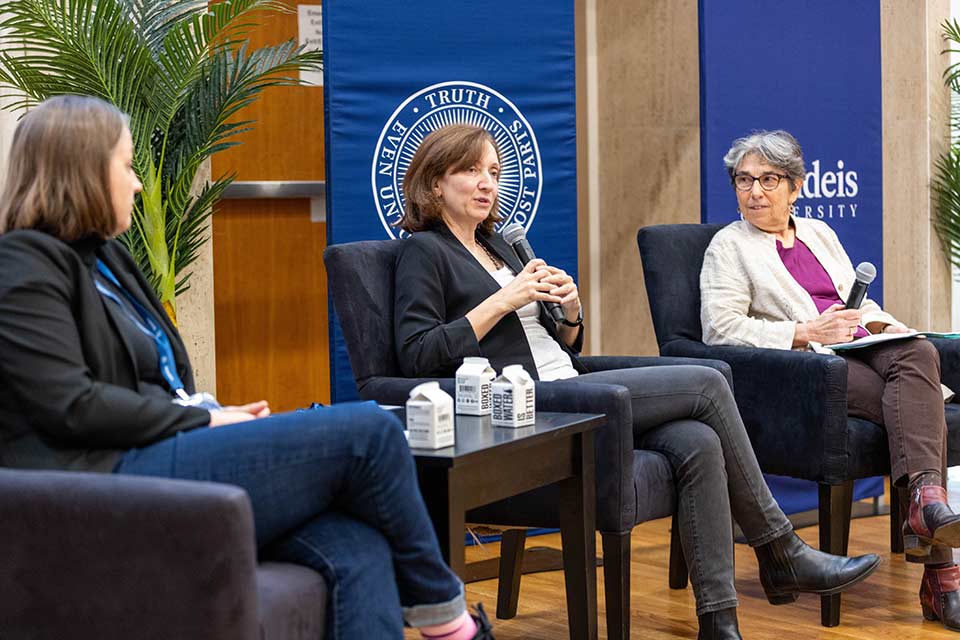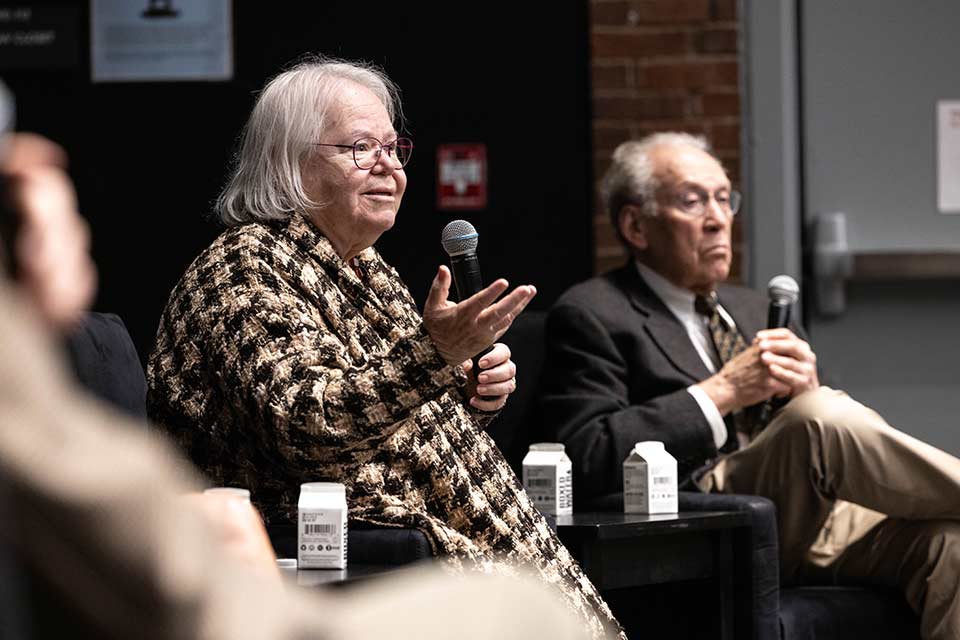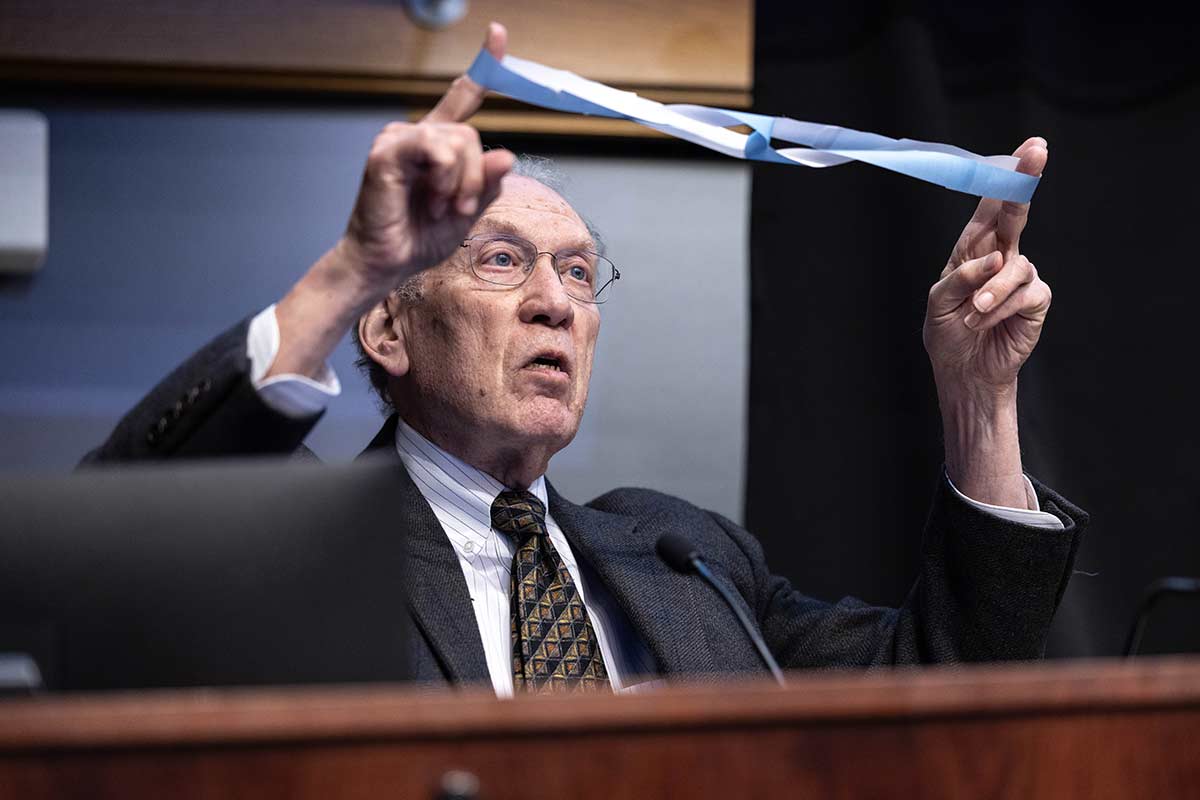The Power of Brandeis Science
Written by Laura Gardner, Photography by Dan Holmes and Galen Morse
October 16, 2023
Since its founding, Brandeis University has played a significant role in advancing science, attracting and developing world-class faculty, educating top scientists, and creating innovative breakthroughs.
How is a university much smaller and younger than its competitors able to achieve such scientific prowess? Two panel discussions held during the 75th anniversary weekend celebrations , shed light on that fundamental question.
Whether they are early, mid-, or late-career scientists in fields ranging from biology and chemistry to physics and mathematics, panelists agreed that the culture of collaboration, community, and mentoring that is the foundation of the university is a new It has helped to promote exploration and scientific understanding of the field of research. .
“Pioneering Women Scientists at Brandeis” featured Ruth Charney ’72, GSAS MA’72, Theodore and Evelyn G. Berenson Professor Emeritus of Mathematics. Christine Greenberger, assistant professor of biology; Chemist Grace Han, Lanzmann Science Career Development Chair; Liz Hedstrom, professor of biology and chemistry; and physics professor Gabriela Sciorra.


Saturday’s panel, “Innovators, Game Changers, and Education,” featured Nobel Prize winner Michael Rozbash, Peter Gruber Neuroscience Endowed Chair and Howard Hughes Medical Institute Investigator. James Haber, Abraham and Etta Goodman Professor of Biology and director of the Rosenstiel Center for Basic Medical Research; Gina Turrigiano, Joseph Levitan Professor of Visual Science; Dorothy Kahn, Professor of Biochemistry and Howard Hughes Medical Institute Investigator. and Eve Marder ’69, University Professor and Victor and Gwendolyn Bainfield Professor of Neuroscience.
Rosbash, who won the Nobel Prize in 2017 for his work on circadian rhythms, pointed to key elements that make Brandeis a scientific powerhouse. “Great institutions have a positive feedback loop. Great people stick to hiring other great people, which helps great organizations survive.
“Another explanation is that there is great and remarkable collaboration between different groups and different disciplines,” he said, adding, “We have great colleagues and people that we value very much.” “There are communities that are doing this,” he added.
Charney, who moderated Friday’s panel discussion, spoke about his experience teaching at Ohio State University for 20 years before coming to Brandeis. At Ohio State University, it took “years” for her to meet anyone outside of the math department. At Brandeis, she said, she quickly began getting to know people throughout the university.
“Great institutions have a positive feedback loop. Great people persist in hiring other great people, which helps great organizations survive.”
michael rosbash
Marder, who returned to Brandeis as a junior faculty member in 1978 after earning his doctorate at the University of California, San Diego, said he benefited from Brandeis’ institutional “open-mindedness.” She was hired as her fifth woman in the 16-person biology department. “This is really remarkable,” she said. “My female colleagues who went on to other institutions were often among the first.”


Turigliano, a former postdoc in Marder’s lab, describes Brandeis as an “incredibly collaborative and interactive place,” with “a rich web of connections where undergraduates, graduate students, postdocs, and faculty interact with each other.” ” is featured.
Like the other panelists, Kahn said Brandeis is a group of eccentric and “a little crazy” people who want to do something new and contribute to advancements in their field before being labeled “sexy.” He said he can identify interesting scientists who are thinking about it.
“There’s a theory that Brandeis has always been opportunistic and focused on underrepresented people,” Hedstrom said during Friday’s panel discussion. We give them a chance. Not only do they grow, but they are very loyal to the university.”
Mr. Grienberger, who recently won the $1.5 million National Institutes of Health Newcomer Award, credits his peers, including Mr. Turrigiano, Mr. Rozbash and the late Brandeis biologist John Risman, for paving the way for his success. “Giants.”
Panelists noted Brandeis’ ability to foster intellectual and personal confidence. “One of the things he thinks makes Brandeis really special is collaboration. There’s someone here who can help with any crazy idea,” Hedstrom said.
When Charney was an undergraduate at Brandeis, there were no women on the mathematics faculty, but she said she was encouraged to attend graduate school. “The teachers were very happy to see that we were interested in mathematics.”
Linda Zimmerman ’69, who attended Friday’s panel discussion, offered her perspective on Brandeis’ approach to science, saying, “Nothing was beyond imagination.”

